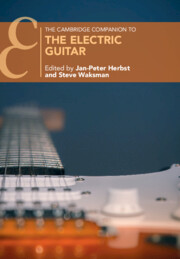The Personal and the Universal
There’s a commonly held perception that musicians don’t enjoy interviews. Holed up on Zoom calls for hours on end, artists are asked to verbalize emotions they have already committed to song, to dissect personal experiences, and to pick apart their lives to explain their music. And, increasingly, they’re speaking to journalists looking for a juicy soundbite that will sell the story to fickle online audiences. But those of us lucky enough to work in guitar journalism rarely have this problem. We’re not looking to delve into a guitarist’s last relationship or their political leanings—sure, we might touch on that, but what we really want to know is which guitar they played for that solo, the secret to honing those alternate-picking chops, their thoughts on analog versus digital gear. In our world, these are the topics that generate intrigue among our audience—and they’re the conversations the artists want to have, too.
I’ve had chats with John Frusciante where the PR has intervened to end our interview after the allocated slot ran over; Frusciante insisted we continue for another forty-five minutes, and later rang my personal number to clarify a point about the room reverb on the latest Red Hot Chili Peppers record. Fifteen minutes with Muse’s Matt Bellamy on his newly established ownership of Manson Guitars became an hour-long conversation about his gear philosophy, where a relatively pedestrian enquiry about the guitars that had recently impressed him resulted in the scoop that he had bought his idol Jeff Buckley’s Telecaster.
My experiences in guitar journalism are far from unique: Whatever their stature, these artists are the same nerdy electric guitar fans they were as teenagers. And like most of us in the industry, they never ‘grew up’—instead, the guitar became a lightning rod for their creativity and their personality. As a result, an interview on the subject is rarely purely about the physical, even if it starts out that way; there’s an intense emotional connection that builds with an instrument and one’s own playing identity within it. One of today’s premier virtuosos, Yvette Young, has said on many occasions that the guitar saved her life, despite the fact that her imposter syndrome made her feel like an outsider in guitar circles due to her unique open-tuned, two-hand tapping approach. Her candidness is typical of many of the younger generation of players rising through the ranks, who display little of the bravado that dominated the guitar scene in the 1980s, where speed was everything. In an age where social media provides everyone with a window into a carefully curated self-image of dazzling technique delivered via perfect takes, perhaps the humble interview provides an opportunity to be less guarded and more human in discussing a shared interest with a fellow enthusiast.
When a player dissects their playing approach and their own learning journey, it bears their soul in a way that no carefully conceived album concept, presented via a social media feed, could. The electric guitar remains the most truly unique instrument there is: There will be no other guitarist on Earth who uses the same pick on the same strings, who bends notes in the exact same way through the same cable into the same pedals via the same amp, dialed in with identical settings. And even when famed players do play through their heroes’ rigs, they are inevitably disappointed that they sound nothing like their idols. To answer the age-old debate, the tone is in the fingers—and those fingers are controlled by the brain, which is shaped by countless records, thousands of hours of practice, and a burning desire to create. This is why guitar journalists burrow down into this niche rather than more holistic music writing: we love this instrument, and we cherish the common interest that binds us to the artists we’re speaking to. It’s a unique position within the media industry, and we feel fortunate to have that hook to hang our editorial hats on.
Over the years, I have learned that it takes a rare combination of skills to be a guitar journalist. There are plenty of enthusiasts who know everything about the guitar but cannot communicate it via the written word. There are legions of journalists who can type the most wonderful prose, but without that background in the instrument, fail to reach the heart of the matter. Good guitar journalists occupy an elusive crossover in that Venn diagram: editors know it, artists know it, and, crucially, readers know it. We seek to dig into every nuance of the instrument we hold dear, and, in turn, desire to see it thrive long into the future. The electric guitar is intensely personal, but it is also universal – and that is what we, as journalists, strive to celebrate with every article.

